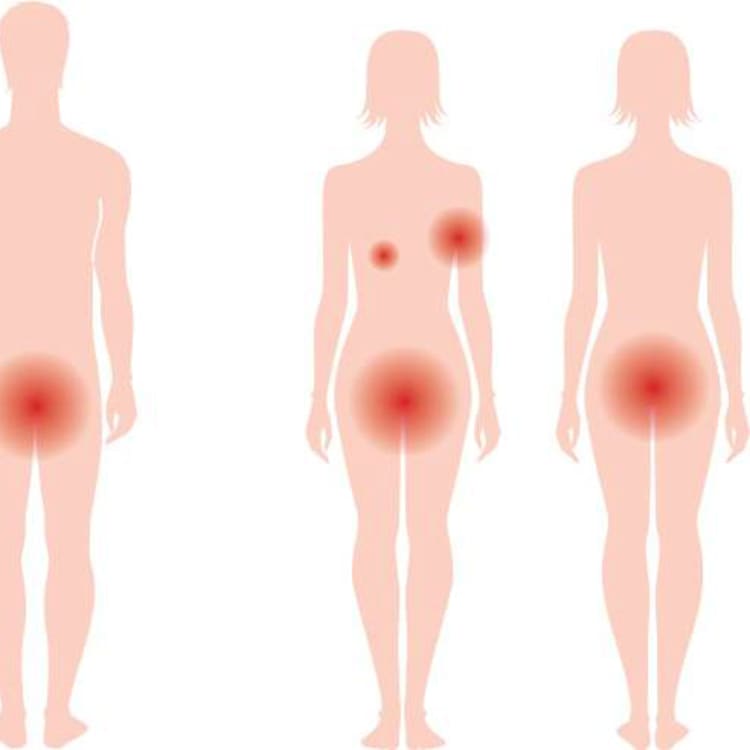Hidradenitis Suppurativa, also known as acne inversa, is a chronic skin condition that causes painful lumps and pus-filled abscesses in the sweat glands and hair follicles under your skin. It is an inflammatory skin condition that’s a mystery to many. While there are many myths surrounding this disorder, it’s crucial to create hidradenitis suppurativa awareness. Here are six of the most common misconceptions about Hidradenitis Suppurativa.
Myth 1: Hidradenitis Suppurativa only affects certain races or ethnicities
While it is true that Hidradenitis Suppurativa tends to be more common among certain races or ethnicities, such as people with African American or Middle Eastern heritage, it can affect people of any race or ethnicity. In fact, recent studies have shown that about 1% of the general population worldwide suffers from this condition. This is why creating Hidradenitis Suppurativa awareness is crucial.
Myth 2: Only women get Hidradenitis Suppurativa
While it is true that women are more likely to get Hidradenitis Suppurativa than men, both genders can develop this condition at any age. And while some studies have found a possible link between hormonal changes and an increased risk of developing Hidradenitis Suppurativa, we still don’t fully understand why men may be less likely to get it than women.
Myth 3: There’s no treatment for Hidradenitis Suppurativa, so you just have to live with it.

While there is no cure for Hidradenitis Suppurativa, several treatments available can help manage your symptoms and reduce your risk of flare-ups. These treatments range from topical antibiotics and anti-inflammatory medications to surgical procedures like laser therapy and excisional surgery. With the right treatment plan tailored to your specific needs, you can effectively manage your symptoms and keep your Hidradenitis Suppurativa under control.
Note that treating HS in early phases (where there’s pre-clinical inflammation with no structural damage) can prevent or reduce the devastating progression to fistula and scarring, which may require surgical treatment. Therefore, early diagnosis and interventions on various risk factors (like treating hormonal disturbances, obesity, and smoking cessation) when first HS signs arise can help minimize the severity of the condition.
Myth 4: Stress causes Hidradenitis Suppurativa.
Although stress has been linked to a number of other skin conditions like rosacea and psoriasis, there is currently no evidence that stress plays a role in the development of HS. However, since HS can cause significant emotional distress due to its visible nature and frequent outbreaks requiring ongoing treatment and monitoring, addressing any underlying mental health conditions like anxiety or depression may help improve the quality of life for people living with HS.
Myth 5: People with HS should avoid exercise because sweating exacerbates their symptoms.
Exercise is one of the best things you can do to manage HS flares because staying active helps promote circulation throughout the body and keeps lymph nodes functioning properly. This reduces inflammation in the skin tissue and helps clear toxins from within sweat glands faster than they would otherwise be removed through normal bodily processes alone.
However, if you notice that you tend to sweat more during periods when your HS symptoms are flaring up worse than usual, make slight adjustments like exercising in cooler temperatures or switching up your routine. This will allow you to warm up gradually before strenuous physical activity. It will also minimize discomfort during these times while supporting overall health benefits associated with regular exercise regimens regardless of whether you have HS.
Myth 6: HS is a rare skin disease.
Hidradenitis Suppurativa was thought to be a rare skin condition. However, medical researchers and healthcare providers know it’s a common condition. It’s estimated that up to 3.8% of Canadians have HS. And due to a lack of awareness of Hidradenitis Suppurativa, most patients are misdiagnosed initially and don’t receive the correct treatment during the early phases of HS.
Myth 7: Hidradenitis Suppurativa is contagious
Hidradenitis Suppurativa isn’t contagious. It’s not related to poor hygiene. While this skin condition is characterized by painful bumps or abscesses in the groin, armpits, and buttocks. These bumps or abscesses might become tunnels below the skin that drain fluid. Due to its appearance, HS is often misdiagnosed as inflammation of the hair root (folliculitis) or acne.
Hidradenitis Suppurativa Awareness – Final Thoughts
There are many myths surrounding HS. Sometimes, patients forget that these are just myths and they are not true. So, we have reminded you of the seven most common myths or misconceptions about Hidradenitis Suppurativa so that you can ensure they don’t knock you down.
Hidradenitis Suppurativa Awareness FAQs
Does stress cause Hidradenitis Suppurativa?
While stress has been linked to a number of other skin conditions like rosacea and psoriasis, there is currently no evidence that stress plays a role in the development of HS. However, since HS can cause significant emotional distress due to its visible nature and frequent outbreaks requiring ongoing treatment and monitoring, addressing any underlying mental health conditions like anxiety or depression may help improve the quality of life for people living with HS. This is why it’s crucial to create Hidradenitis Suppurativa awareness.
Is Hidradenitis Suppurativa contagious?
No. HS isn’t contagious. It’s not related to poor hygiene. While this skin condition is characterized by painful bumps or abscesses in the groin, armpits, and buttocks. These bumps or abscesses might become tunnels below the skin that drain fluid. Due to its appearance, HS is often misdiagnosed as inflammation of the hair root (folliculitis) or acne.
